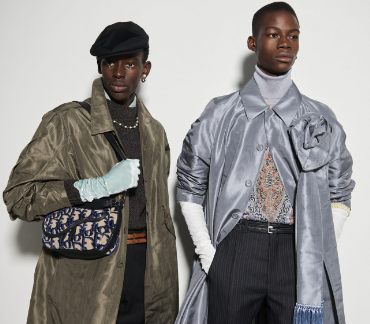
Gender-neutral clothing has been a growing trend in the fashion industry, and it’s now becoming a mainstream trend in the London fashion scene. Gender-neutral clothing refers to clothing that is designed to be worn by people of any gender, without being explicitly masculine or feminine. The trend has been driven by a growing awareness of gender identity and a desire for more inclusive fashion.
The London fashion scene has always been known for its creativity and innovation, and the rise of gender-neutral clothing is no exception. Designers are pushing the boundaries of traditional gender roles and embracing a more fluid approach to fashion. They are creating garments that can be worn by anyone, regardless of their gender identity.
One of the most significant factors driving the trend towards gender-neutral clothing is the growing awareness of gender identity and the LGBTQ+ community. More and more people are identifying as non-binary or gender-nonconforming, and they are seeking fashion that reflects their identity. Gender-neutral clothing provides a way for people to express themselves without being restricted by traditional gender roles.
The fashion industry has also been influenced by the growing demand for sustainability and ethical fashion. Gender-neutral clothing is often designed to be more versatile and durable, with a focus on quality and longevity. This means that people can buy fewer pieces that can be worn in a variety of ways, reducing waste and the environmental impact of fashion.
Designers in London are leading the way in the gender-neutral fashion movement. One example is the brand Art School, which was founded by designers Eden Loweth and Tom Barratt. Their collections are characterized by their fluidity and inclusivity, with garments that can be worn by anyone, regardless of their gender identity. Another example is the brand Marques’Almeida, which is known for its deconstructed denim and oversized silhouettes that blur the lines between masculinity and femininity.
High-end fashion brands are also embracing the gender-neutral trend. Gucci launched its gender-neutral collection, “Gucci MX,” in 2020, which features clothing that is designed to be worn by anyone, regardless of their gender identity. The collection includes items such as oversized shirts, denim jackets, and wide-legged trousers that can be worn by people of any gender.
The rise of gender-neutral clothing has also been reflected in the retail sector, with more and more stores dedicating space to gender-neutral fashion. The department store Selfridges launched its “Agender” concept in 2015, which featured a range of gender-neutral clothing and accessories. Other stores, such as Zara and H&M, have also launched gender-neutral collections, recognizing the growing demand for inclusive fashion.
However, the trend towards gender-neutral clothing is not without its challenges. Some people argue that the trend is merely a marketing ploy, and that true inclusivity goes beyond clothing. Others argue that gender-neutral clothing perpetuates the idea that gender is a binary, rather than recognizing the spectrum of gender identity.
In conclusion, the trend towards gender-neutral clothing is becoming a mainstream trend in the London fashion scene. It reflects a growing awareness of gender identity and a desire for more inclusive fashion. Designers are pushing the boundaries of traditional gender roles, creating garments that can be worn by anyone, regardless of their gender identity. While the trend is not without its challenges, it offers a new and exciting direction for fashion, one that is more fluid, inclusive, and sustainable.








